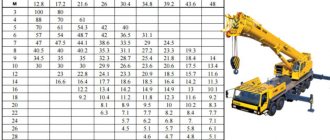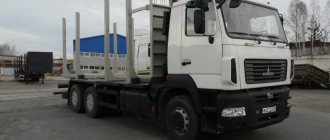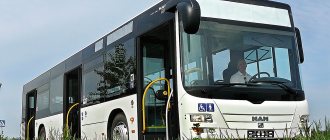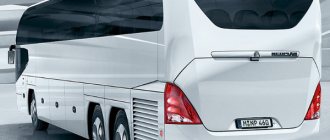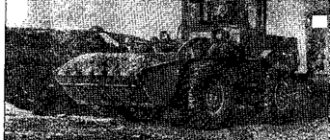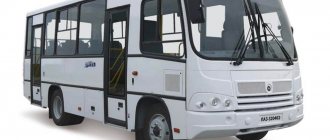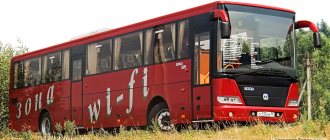Based on the law of the Russian Federation, a bus is a vehicle equipped with a motor, which is designed to transport citizens both in a sitting and standing position. In this case, there must be at least nine seats in the cabin, including the driver’s seat. Such large-sized vehicles are used to transport passengers along routes established by the customer with stops for disembarkation and pick-up. As a rule, the role of the customer is played by legal entities and individuals. There are several classifications of buses depending on their size, capacity and other parameters.
Types of routes
Classification of buses by territorial basis is as follows:
- Passenger vehicles making international trips outside the territory of Russia.
- Buses operating on city routes. They do not travel outside the same city.
- Passenger transport transporting people outside the city over short distances (suburban routes). As a rule, such bus routes are no more than 50 km from the city limits.
- Buses making long trips between cities within the same country. As a rule, transportation is carried out using comfortable equipment. The routes are quite long - more than 50 km from the border of the departure city.
The history of the bus in Russia
Russia was not far behind Germany, having started producing electric buses at the turn of the 19th and 20th centuries. The history of the domestic bus began in 1901, when, thanks to the efforts of Russian engineers and auto mechanics, a Russian electric car was born. The bus carried up to 10 people, could travel 60 km without recharging, reaching speeds of up to 22 km/h.
And the history of the appearance of a bus with an internal combustion engine began in St. Petersburg in 1903. The place of production was the Frese factory. The interior of the car was without a roof (like a modern convertible), could accommodate up to ten passengers and accelerated to 16 km/h. The bus was also used as a fire truck, or rather, to transport firefighters and work equipment.
And as public transport, the bus in Russia began to operate not in the capital, but in Arkhangelsk in 1907. True, it was not a car from a domestic manufacturer, but from a German one - the NAG brand. The equipment, weighing 6 tons, could accommodate 28 passengers, greatly facilitating movement around the big city.
In the same year, on October 17, a trial bus route took place in St. Petersburg, and on November 11, passenger service was opened on the line Alexandrovsky Garden - Baltic Station. At that time the car was also called an “omnibus car”. The word “bus” was first used in his works by the Russian poet Igor Severyanin in 1912. At different times, the St. Petersburg vehicle fleet consisted of from 8 to 14 cars; both single- and double-decker models were used. Travel in first class cost 9 kopecks, in second class - 6 kopecks.
Almost a year later, on August 13, 1908, residents of Moscow saw the bus, but as public transport, the cars were launched only under the USSR - on April 18, 1922. One of the routes ran between Tverskaya Zastava and Kalanchevskaya Square and was divided into 4 stations and 13 stops. At that time, the Moscow fleet consisted of 40 buses.
Types of passenger transportation
Classification of buses into classes depending on their purpose implies dividing passenger equipment into several groups:
- 1st group: special buses, for example, transporting children to schools and sanatoriums, taking shift workers to their place of work, delivering police officers to places of mass unrest, etc. At the same time, the equipment inside and outside the equipment for transporting people changes depending on their purpose .
- 2nd group: tourist and excursion vehicles. Based on the name, the reader understands that such buses are used to transport tourists to hotels and places of interest. As a rule, they are equipped with soft wide armchairs, a table, a dry closet and air conditioning.
- 3rd group: public buses. They serve to transport citizens along urban and suburban routes.
Neoplan Jumbocruiser
The famous high-capacity double-decker bus, designed for 103 seats. The Neoplan Jumbocruiser is the result of the work of German engineers who are known for their meticulousness and scrupulousness. As soon as the Jumbocruiser modification appeared within the global automotive industry, several hundred carriers expressed a desire to transport it. The length of this giant is 18 meters and the height is 4 meters. This is the only large-sized articulated bus that can be found on the streets of European cities. Basically, Europe with its narrow streets gives preference to compact and fast minibuses.
The Neoplan Jumbocruiser was the exception to the rule. For the first time, the world's largest bus rolled off the assembly line back in 1973. In 1993, the model was removed from serial production. However, there are quite a few Neoplan Jumbocruisers plying around Europe. In most cases, they are used on excursion routes. To date, the Neoplan Jumbocruiser still holds the Guinness World Records record.
Vehicle dimensions
Depending on the capacity, the classification of buses is as follows:
- Vehicles with particularly large capacity. Such buses are ready to transport from 50 to 80 people.
- Large capacity passenger transport. Their salon is designed for 40-45 seats.
- Medium capacity buses. The interior of this type of ground transport is equipped with seats ranging from 30 to 35 pieces.
- Low-capacity public transport. The number of seats ranges from 20 to 25 pieces.
According to the classification of buses by passenger capacity, the group of small buses includes domestic vehicles of such brands as PAZ. They are produced not only in standard configuration. There are small buses from the Pavlovsk plant of a specialized version; they are designed to work in the harsh northern regions of our country. Such machines are equipped with the following functions:
- an additional layer of insulation for the interior and driver's cabin;
- glazing consisting of several glasses;
- additional heating stoves.
All this is necessary to keep warm while traveling in the far north.
There are also small buses for traveling in mountainous areas. They have the following additional elements installed:
- special brakes equipped with a retarder;
- seat belts on all passenger seats;
- a recoil device that helps hold vehicles when parking on a strong slope in the mountains.
In the southern regions of Russia, small buses are also actively used to transport passengers. As a rule, large sun screens and powerful air conditioners are installed on them.
Experts classify domestically produced buses as medium-capacity passenger vehicles. They are equipped with soft and comfortable seats in the cabin with a reclining function.
According to the classification of buses by length, vehicles of the LAZ, Ikarus and LiAZ brands can be classified as large and especially large capacity vehicles, depending on the modification.
Current regulations
Requirements for passenger transportation by bus in 2022 are established by the following regulations:
- Federal Law No. 220-FZ of July 13, 2015;
- Charter of motor transport and urban ground electric transport;
- Resolutions, orders, instructions and letters of Rostransnadzor.
The rules for the carriage of passengers are mandatory for all legal entities operating in this area. There are also certain requirements for the driver.
In addition to the listed regulations, each region of the Russian Federation has the right to adopt its own legislative documents in addition to them. Adjustments and additions may be made to existing standards, which are a consequence of the analysis of statistics of all road accidents involving buses. The wishes of passenger transport drivers are also taken into account. To eliminate the possibility of violations due to ignorance, it is recommended to carefully monitor all changes made.
Requirements for passenger transportation by bus:
- availability of a package of documents necessary for the transportation of passengers;
- compliance by the driver with all his professional duties;
- compliance of the passenger bus with all technical characteristics established by current regulations.
Compliance with established standards ensures the safety of not only the life and health of citizens, but also their property. Violation of the rules for transporting passengers entails administrative liability, according to the Arbitration Procedure Code of the Russian Federation.
Single and double decker vehicles
Classification of buses by body implies the division of this ground mode of transport into two- and one-story ones. One-and-a-half-story vehicles are also quite common. Their advantage lies in the high seating position for passengers. The lower compartments are designed to accommodate luggage and large cargo. It is not surprising that many travel agencies purchase one-and-a-half-decker excursion buses.
In double-decker buses, passengers are accommodated on the second floor, while the first floor is used both to accommodate people there and to install toilets, a bar and a luggage compartment there. Some branded vehicles even have bedrooms, game rooms and televisions.
Technical requirements for buses for transporting passengers in 2021
- Compliance of the type, brand, design and power of the vehicle with the type of bus intended for the transport of passengers.
- The parameters of the vehicle must ensure its free passage on Russian roads.
- Light bulbs in the bus interior must be kept in working order for comfortable transportation of passengers in the evening.
- The presence of speakers in the cabin for the driver to address passengers if necessary.
- Keeping door and window mechanisms in working order.
- Availability of a working heating system for traveling in winter.
You must have:
- certificate of compliance with environmental standards;
- first aid kit;
- two fire extinguishers: one next to the driver’s seat, the second in the cabin;
- a wheel chock and a device that provides access to an emergency exit;
- warning triangle;
- compartments for large luggage;
- navigator and video recorder in the driver's cabin;
- indication of the route on the outside of the bus;
- a sign indicating that passenger transportation is taking place.
Fuel for vehicles
There is a classification of buses, where vehicles are divided into groups depending on the fuel they consume. Today, most modern vehicle engines run on three types of fuel:
- Natural gas (methane).
- Diesel fuel.
- Gasoline of various brands.
The most economical engines were recognized as engines that consume diesel fuel and gas.
Recently, foreign and domestic factories are increasingly producing trucks and buses with electric motors. Instead of the usual gas tank, they are equipped with powerful batteries filled with electrolyte. They are an environmentally friendly vehicle, but they can work within large cities, where there are modern electric stations for charging batteries.
Opening of bus lines in the USSR
Passenger bus service in St. Petersburg, as well as bus production, was discontinued in 1914 shortly before the outbreak of the First World War for economic reasons. With the advent of peacetime, bus traffic was revived, and Soviet engineers were tasked with making buses more comfortable and economical so that they would be accessible to all segments of the population. Employees of the Leningrad plant worked on this. On July 8, 1926, Leningrad waited for the first bus line; the transport went to Sestroretsk.
Today, modern engineers are working to create environmentally friendly cars, and they assure that very soon we will be driving buses driven by electric motors.
World quality standards
All over the world, buses used to transport tourists over long distances are subject to increased demands in terms of comfort. The salon must have:
- Air conditioner.
- Dry toilet.
- TVs.
- Locker room.
- Kitchen.
In addition to all this, the cabins are equipped with powerful lighting, stands for cups and food, and comfortable reclining backrests on soft passenger seats.
Buses for special purposes
This group is created on the basis of ordinary buses, but is modified and supplemented with various functionality and equipment, in accordance with the specifics of transportation. Buses are distinguished:
- shift vehicles, all-terrain vehicles;
- medical, sanitary - with specialized laboratory, resuscitation, etc. equipment inside the cabin;
- for rescue and emergency services;
- postal;
- cargo-passenger;
- ritual;
- advertising;
- mobile libraries, film installations;
- prisons - with armored doors, without windows.
If you want to read about the types of garbage trucks, follow the link Types of garbage trucks.
Evaluation of buses by an international organization
The International Road Transport Union regularly increases the requirements for tourist buses. This mainly concerns the safety of people in the cabin of a huge car, its purpose and comfort. The international classification of buses includes 5 categories of vehicles. They are designated by the number of stars.
The “one star” category includes buses for organizing city excursions. Transport with two stars serves for international tourism. The buses, which are rated three to five stars by the International Road Transport Union, have to travel long distances. In this case, trips take from one to several days.
According to the classification of buses, the most comfortable equipment is rightfully considered to be the one that was awarded five stars. These are liners with a high level of comfort. There is a kitchen with a microwave, grill, and a dispenser for storing cold and hot drinks. The bus has video cameras that are installed around the entire perimeter of the cabin and outside. They allow the driver to carefully park the vehicle, as well as ensure that all passengers board before setting off on a long journey.
Requirements for intercity transportation
For intercity passenger transportation in the bus, the following package of documents is required:
- a notarized copy of the license of a legal entity (carrier company), granting the right to carry out passenger transportation activities;
- driver's license category D;
- unlimited MTPL insurance policy;
- waybill;
- a certificate indicating that the driver has passed a medical examination;
- diagnostic bus technical inspection card;
- certificate of registration of the vehicle with the assignment of state numbers;
- technical passport of a passenger bus.
Requirements for the driver to ensure safety measures:
- monitoring passenger compliance with safety measures;
- boarding and disembarking people only after the vehicle has come to a complete stop;
- storing luggage in luggage compartments (upper and lower), the presence of which is mandatory on long-distance buses;
- driving the bus strictly along the established route (deviation is possible only with the permission of the carrier company).
Carrying passengers in a standing position is permitted only if the following conditions are met:
- the distance between the points of departure and arrival does not exceed 70 kilometers;
- The cabin has handrails and enough free space to accommodate people comfortably and safely.
If the duration of the route exceeds 500 kilometers, the presence of two drivers is required for one flight.
In intercity transport, emergency exit signs and instructions for their use and a list of rules for using the vehicle must be placed.
Mercedes-Benz Citaro "CapaCity L"
A very popular model of German buses, which can be seen both in Germany itself and in other European cities. Along with diesel and gasoline engines, manufacturers of the Citaro “CapaCity L” model offer environmentally friendly versions based on a hybrid powertrain. The design of such buses is based on hydrogen fuel cells and a battery with the function of regenerating energy reserves. The latest modification of the Mercedes-Benz Citaro “CapaCity L” was released in 2004. After this, German engineers introduced a number of innovations that significantly improved the level of comfort and safety of passengers.
The length of this giant road train is 21 meters. It is designed for 189 passengers. In addition to Europe, the Citaro “CapaCity L” model is actively purchased by Asian countries. Today this is the only environmentally friendly bus that does not pollute the environment.
LiAZ 621365
Here is the first articulated bus in the history of Russia, which was created on the basis of a modified and significantly improved Soviet “accordion”. Serial production of LiAZ 621365 started in 2016. The length of this bus is 18.4 meters. At the same time, capacity depends on the configuration. In the basic version, LiAZ 621365 is designed for 153 passengers; after a number of introduced innovations, the bus was equipped with 193 passenger seats.
A significant disadvantage of the LiAZ 621365 is the fact that with such impressive dimensions it is capable of reaching a speed of no more than 65 km/h. Engineers equipped the bus with a diesel power unit and automatic transmission. Initially, LiAZ 621365 appeared only in Moscow. Subsequently, they began to operate in other Russian cities, in particular: in Nizhny Novgorod, St. Petersburg, Tyumen and Samara.
Ikarus 286
The popularity of the famous Hungarian bus reached its peak in the 80s and 90s. In various variations it could often be found on city streets. But even more often the Ikarus 286 worked on intercity flights. At the same time, it was quite tough and not designed for long trips, but this never stopped the Soviet people. The Ikarus 286 rolled off the production line in 1976, and was sort of a response to the Neoplan Jumbocruiser. Ikarus was designed for 106 people. At the same time, it had a lot of free space for standing passengers and luggage. Initially, the customer for the model was the United States, but the contract was subsequently cancelled.
Hungarian producers were forced to look for new markets. The Soviet Union liked such roomy buses. Over the years they have operated on various routes. As for Ikarus 286, its length is 18.2 meters. There are several surviving copies, one of which was miraculously discovered in the United States.
Neobus Mega BRT
This giant road train was developed on the basis of the Mercedes-Benz O-500MA. The experiment was so successful that Neobus Mega BRT is still traveling around Europe. This colossus reaches 28 meters in length. The countries of Latin America were the first to decide to try Neobus Mega BRT. In particular, in Brazil this type of transport is a huge success. In many Brazilian cities, separate lanes have been allocated specifically for Neobus Mega BRT. The bus is designed to simultaneously transport three hundred people. After Brazil, Neobus Mega BRT was purchased by the Chilean authorities. They have also successfully taken root in Chile.
Neobus Mega BRT was created with the support of leading Swedish engineers. In the very near future, the Mega BRT model, which runs on environmentally friendly biofuel, should be released. This bus allows you to quickly transport a large number of passengers, which is very convenient for densely populated countries.
Would you like to be on such a giant bus? Write comments and follow our news.
